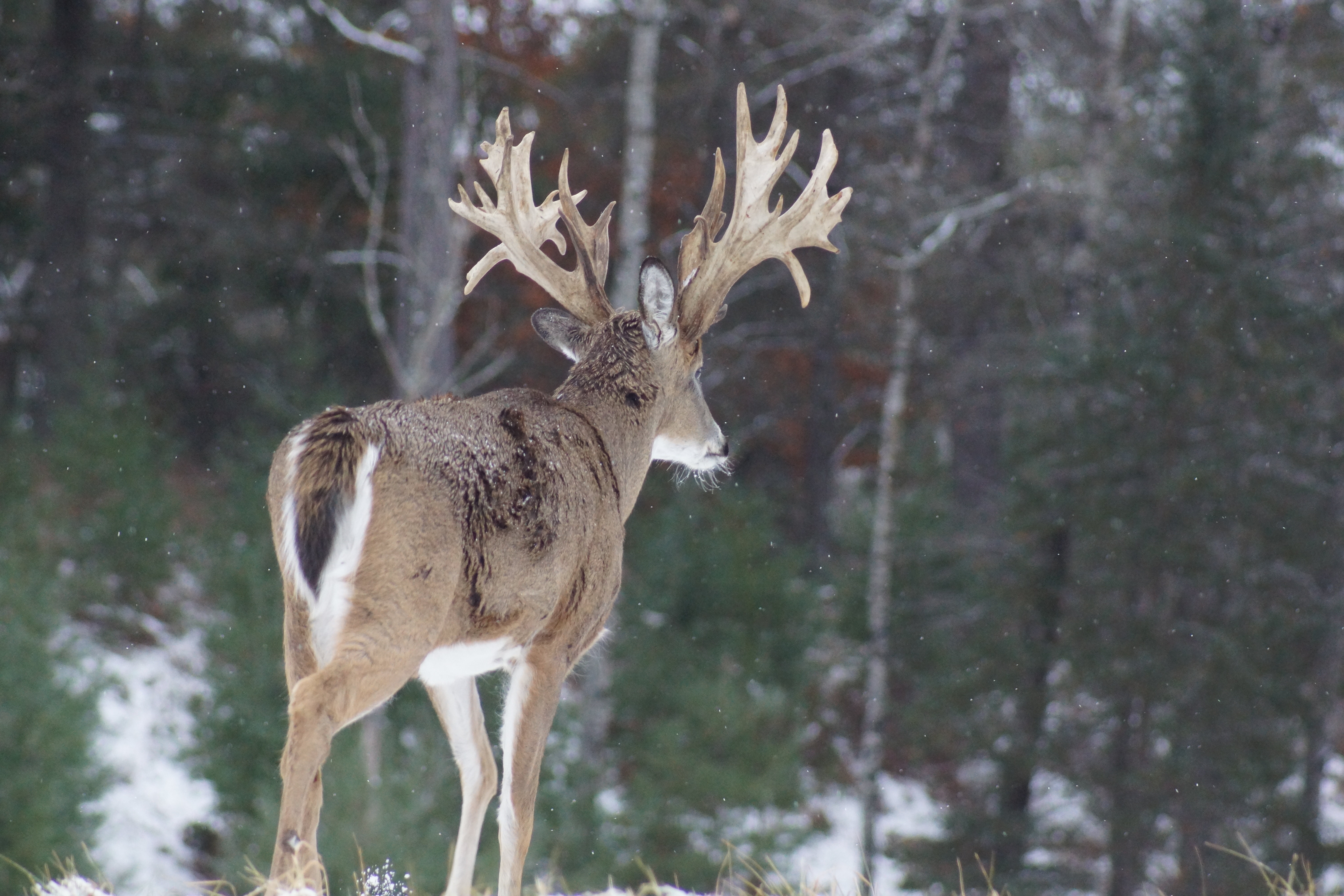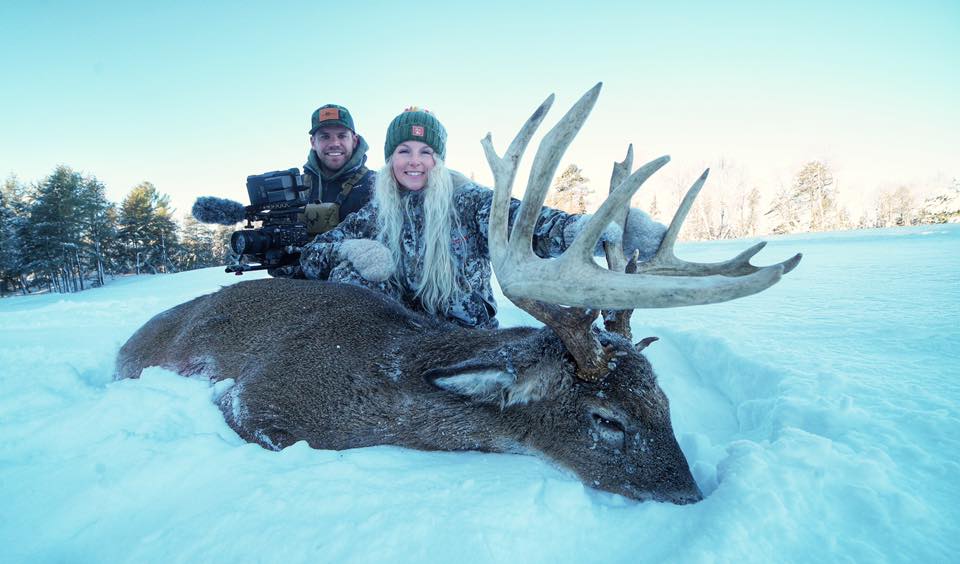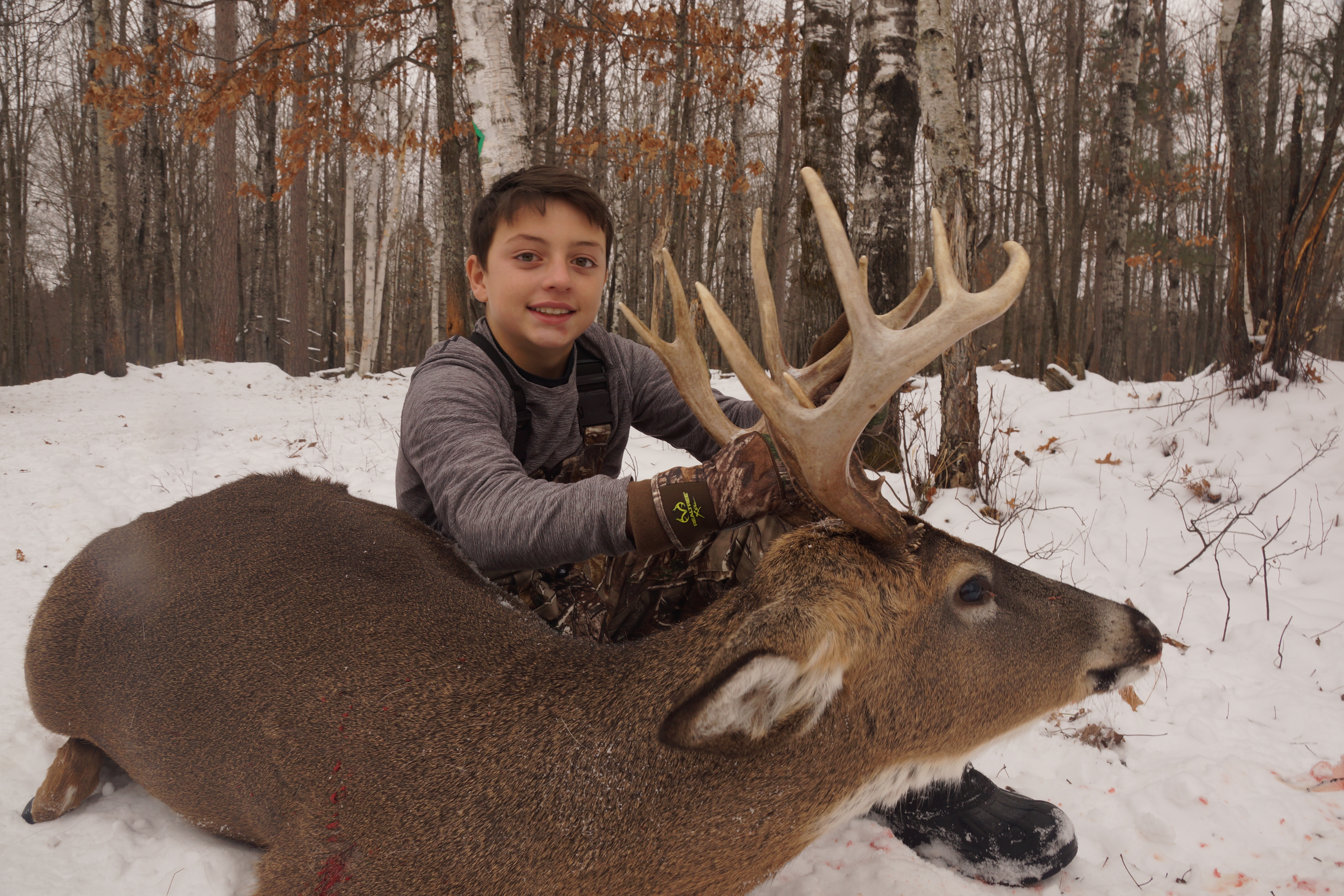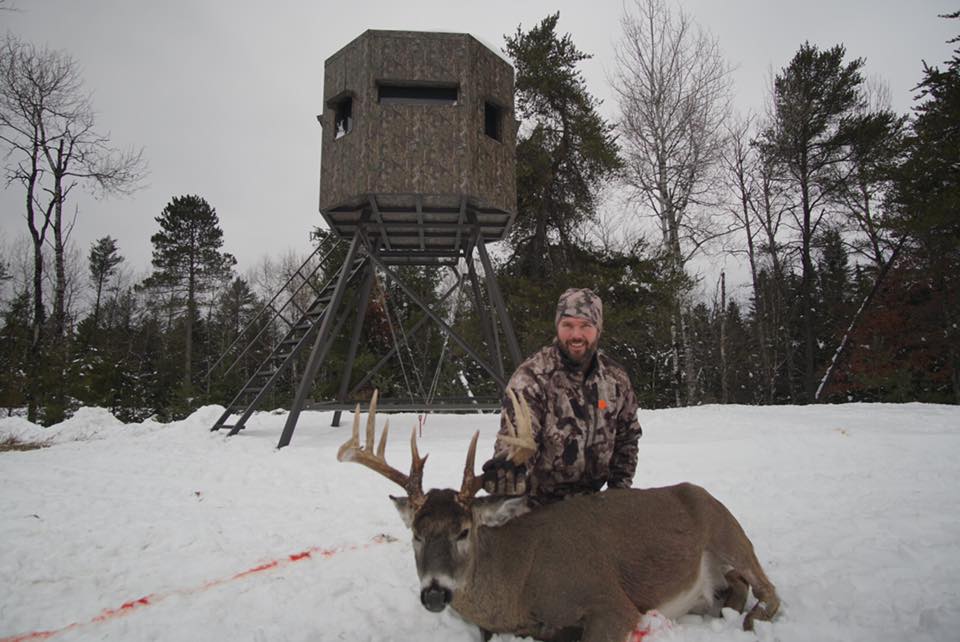Who Guided Hunts Are For
Guided hunts are designed for a wide range of hunters. If you are new to deer hunting, a guided experience offers a safe and ethical introduction with high odds of success. A guide will handle the logistics, explain the process step by step, and help you make good decisions in the field.
Experienced hunters also benefit from guided hunts. If you only have a few days to spare or are traveling to an unfamiliar area, a guide saves time and increases your chance of seeing mature deer. The preparation, scouting, and stand placement are already handled, so you can focus on making the most of your hunt.
Guided hunts are also a great choice for groups. Families, friends, and corporate teams can all enjoy the outdoors together with professional support to ensure everyone has a positive experience. Many outfitters, including Forest of Antlers, offer handicap accessible facilities and hunting setups so hunters of all abilities can participate.
Types of Guided Deer Hunts and What Changes Your Experience
Not all guided hunts are the same, and the type of hunt you choose has a big effect on your experience. One of the first choices is between a preserve hunt and a free-range hunt. Preserves offer managed herds, consistent deer density, and controlled terrain, which means higher chances of encountering trophy-class deer. Free-range hunts take place on open land where genetics, weather, and natural movement patterns play a bigger role. Both can be rewarding, but your expectations and preparation should match the environment.
Weapon choice also changes the dynamic. Archery hunters can expect closer shot distances and more emphasis on stealth, while rifle and crossbow hunters may have longer opportunities and more flexibility. Guides will help match stand placement and strategy to your preferred method.
The level of guidance can also vary. Fully guided hunts mean your guide stays with you the entire time, offering advice and handling tracking and recovery. Semi-guided hunts provide stand locations and support but leave you more independence. Some outfitters also allow unguided hunts on private ground for experienced hunters who prefer to be on their own.
Finally, consider hunt length. Day hunts provide quick opportunities but can be limited in timing. Multi-day packages allow more chances to adapt to deer movement and weather, which often leads to higher success rates.
Booking Window and Season Timing
Timing is one of the most important parts of planning your guided hunt. Deer behavior changes throughout the fall, and knowing when to book helps you prepare.
The pre-rut, typically early in the season, is when bucks are active but still following somewhat predictable patterns. This is a great time for hunters who want steady activity and more controlled encounters. During the rut, usually late October through mid-November, deer are highly active and aggressive, creating exciting hunts with more chances at mature bucks. Post-rut hunts in the late season can be strategic, as colder weather and reduced pressure concentrate deer in feeding areas.
Weather also plays a role. Snow, wind, and rain can shift deer movement and test your gear. Guided hunts help you adapt to these variables, since your guide will adjust stand placement and strategies to changing conditions.
Because high-quality outfitters limit the number of hunters each year, it is best to reserve your hunt months in advance. Booking early ensures you secure the best dates for the phase of the season that matches your goals.
What Your Outfitter Handles vs What You Handle
One of the best parts of booking a guided hunt is knowing that most of the logistics are taken care of for you. Outfitters typically handle transportation around the property, stand placement, blinds, tracking, and recovery. They also take care of field dressing, skinning, cutting, wrapping, and freezing your deer. Coolers are often provided for transport, and some operations even include airport pickup and drop-off for added convenience.
There are also items that are usually not included. Licenses are your responsibility in free-range hunts, along with gratuities for guides and staff. Taxidermy, meat shipping, and special processing requests are also separate from the standard package. Knowing this upfront helps you budget properly.
Preserve hunts have their own considerations. With managed genetics, controlled boundaries, and carefully balanced herds, you can expect consistent opportunities at trophy deer. While your outfitter will manage nearly every detail, it is still your responsibility to be prepared and to make an ethical shot.

Pre-Hunt Prep You Should Do 2 to 6 Weeks Before
Even with a full-service outfitter, preparation on your part makes a big difference. Begin by confirming your weapon zero. Practice shooting from realistic hunting positions such as seated, from a rest, and under cold-bore conditions. Consistency and confidence with your shot are essential.
Physical preparation also matters. Work on mobility, quiet movement, and the ability to shoot comfortably while wearing layers and gloves. A guided hunt will bring you to the right spot, but your stamina and comfort in the field still play a role.
Scent control should be practiced but kept practical. Focus on keeping your hunting clothes clean, storing them properly, and minimizing strong odors. Most guides will advise against complicated routines that are unnecessary.
Review firearm handling and safety basics. If tree stands are part of the hunt, practice with a harness so you are confident before arriving. Finally, prepare your paperwork. This may include your hunting license, hunter education card if required, and any travel documents you need for flights or lodging.
Packing Lists Built for Real Conditions
Packing correctly can make the difference between being comfortable and being miserable in the field. Build your clothing in layers: base layers for moisture control, insulation for warmth, and a waterproof shell for protection. Blaze orange may be required depending on the season. Add gloves, a beanie, and spare socks for comfort.
Footwear should be sturdy and weather-appropriate. Insulated boots, gaiters, and blister care supplies keep you moving without distraction.
Your field kit should include a headlamp with spare batteries, rangefinder, binoculars, wind indicator, knife, game bags, paracord, a compact first aid kit, and hand warmers. On the administrative side, bring your tags, a pen, zip ties, a phone with offline maps, and a portable charger.
For comfort, pack snacks that provide protein and fat, a quiet water bottle, and a thermos for hot drinks. If you plan to record your hunt, bring an action camera, spare cards, and check your outfitter’s media policies beforehand.
Remember that outfitters already provide major items like stands, blinds, and recovery gear. Avoid overpacking by creating a clear “do pack vs leave behind” checklist so you can travel light and focus on essentials.
Travel and Arrival
Deciding whether to fly or drive will shape your travel planning. If flying with firearms or bows, use a proper hard case and follow airline rules about declaring weapons and ammunition. For archery equipment, make sure your case protects against shifting and damage in transit.
When you arrive at camp, you can expect to check in, complete waivers, and attend a short orientation. This usually includes a safety briefing and an overview of the property. You may also be shown where you will be hunting and the type of stands or blinds you will use.
Many outfitters provide a camp range for checking your equipment. Take advantage of this opportunity to fire a practice shot, confirm your zero, and reassure your guide of your effective range. This step sets the tone for a confident and successful hunt.
A Day in the Life on a Guided Deer Hunt
Most guided hunts follow a predictable rhythm. The day begins early, with breakfast before sunrise and preparation for the morning sit. Guides will transport you quietly to your stand or blind by truck, ATV, UTV, or Argo depending on the property setup.
Once in position, your guide will go over expectations. This includes how to handle shot angles, when to communicate, and when to wait. Using rangefinders and knowing when to pass on younger deer are all part of the process.
Midday often brings a chance to rest, move to a different stand, or even try still-hunting with a guide if conditions allow. Lunch and relaxation are common before heading out for the afternoon sit.
Evening hunts can be some of the most exciting, as deer movement increases before dark. Pay attention to thermals and wind, stay disciplined during the final minutes of light, and follow safe unloading practices when leaving the field.
Making the Shot, Recovery, and Ethics
When the moment comes to take a shot, your guide will help you focus on proper selection. For both archery and firearms, broadside and slightly quartering-away angles are the highest percentage shots. These provide the clearest path to vital organs and ensure quick, ethical results.
After the shot, resist the urge to rush. Mark the last place you saw the deer and note its behavior. Your guide will determine how long to wait before tracking, since pushing a wounded deer too soon can reduce your chance of recovery. Guides typically lead the tracking process, using their experience to read sign and make decisions about when to advance or hold off.
Understanding the basics of shot placement is critical. Heart and lung shots create the fastest recoveries, while poor angles increase risk of wounding. A good guide will walk you through scenarios before you ever climb into the stand, giving you confidence when the opportunity arrives.

What Happens Once You Tag a Deer
The work doesn’t end when your deer is down. First, take time for respectful photos to capture the memory. Many outfitters will assist with proper positioning and lighting to ensure the moment is well documented.
Next comes tagging and registration, which may vary by state and property type. Your guide will help with the required steps, making sure everything is compliant.
From there, field dressing begins. Most outfitters handle skinning, quartering, wrapping, and freezing, so you can focus on the experience rather than the labor. Depending on your package, you may have a choice between on-site processing, using a local butcher, or taking the meat home to handle yourself.
If you are hunting in Wisconsin or other states with Chronic Wasting Disease (CWD) zones, carcass movement may be restricted. For example, deer must often be delivered to a processor or taxidermist within 72 hours, and free CWD sampling is available. Your outfitter will guide you through these requirements so you know your meat and trophy are handled legally and safely.
Tipping Etiquette and Crew Roles
Guided hunts involve a team, and tipping is a standard way to show appreciation for their hard work. The main guide is your direct partner in the field, but there are often others involved, including assistant guides, cooks, camp staff, drivers, and sometimes local processors.
A common range is 10 to 15 percent of your total hunt cost. This can be adjusted upward if your guide went above and beyond or helped you secure a once-in-a-lifetime trophy. Bring cash in envelopes to divide among staff, and consider adding a personal thank-you note. Small gestures of gratitude go a long way in hunting camps.
Camp Etiquette and Expectations
Life at camp is part of the guided hunt experience. Arrive on time for meals, meetings, and transport to stands. Be honest about your shooting ability and effective range so your guide can set you up for success.
Practice scent and noise discipline, since careless behavior affects not only your hunt but also others in camp. Respect common areas, keep gear organized, and follow the property’s rules for alcohol, phones, and quiet hours.
Safety is non-negotiable. Always control your muzzle, unload your firearm in vehicles, and follow every instruction given by your guide. Camps thrive when everyone shares a culture of safety and respect.
Accessibility Considerations
Many outfitters are able to accommodate hunters with mobility challenges, but communication is key. Share your needs when booking so the staff can prepare appropriate blinds, ramps, or vehicle access.
Guides can adapt routes, stands, and seating to make sure every hunter has a fair chance at success. At Forest of Antlers, handicap accessibility is built into the lodge and hunting setups, so no one has to sit out the adventure.
Special Notes for Preserve Hunts
Preserve hunts have a few unique qualities that set them apart from free-range hunts. Because herds are managed with genetics and density in mind, hunters can expect consistent opportunities to see trophy bucks. Deer are visible more often, and the odds of taking home a record-caliber animal are much higher.
Shot selection is still critical, and some preserves have trophy fee structures based on the size of the buck harvested. Always discuss these details with your outfitter so there are no surprises.
For first-time hunters, preserves offer an excellent introduction. The environment is controlled, the opportunities are reliable, and the guides provide a safe, ethical framework for your first trophy pursuit.
Weather Plans and Contingencies
Weather can change quickly in deer season, and your guide will adjust accordingly. Cold snaps may spark intense activity, while heavy snow or wind can limit visibility and movement. Rain may push hunts into blinds rather than open stands.
Pack backup clothing that allows you to stay longer in the field without discomfort. Layers, waterproof shells, and hand warmers are essentials for long sits.
In rare cases, an outfitter may delay or reschedule a hunt day due to severe conditions. Having flexible expectations ensures you remain safe and still maximize your chances when the weather turns in your favor.
Photography and Filming
Capturing the hunt is part of the experience for many hunters, and most outfitters have clear guidelines on media. Ask about their policies before bringing cameras or action gear. Some guides will film your hunt for you, while others may allow you to set up your own equipment as long as it does not interfere with safety or shot opportunities.
When it comes to trophy photos, focus on respect and presentation. Position the deer carefully, clean up excess blood, and ensure the animal is shown in a dignified way. These images will represent your memory for years and may be shared publicly, so treat them with care.

After the Hunt
Once the hunt is over, there are still important details to manage. Meat care comes first. If you are driving, your outfitter will help pack and freeze quarters for transport. If you are flying, you may need to ship the meat through a processor or bring it in coolers that meet airline regulations.
Taxidermy decisions should be made quickly, especially if you plan to shoulder mount your deer. Guides can cape and freeze your trophy for a taxidermist or arrange local services on your behalf. Communicate clearly about your preferences so nothing is overlooked.
Before you leave, settle your bill, take care of tips, and provide feedback. Many outfitters appreciate testimonials and online reviews, which help future hunters feel confident when booking.
Common First-Timer Mistakes to Avoid
First-time hunters often make avoidable errors that affect their success. One of the biggest is arriving with an unconfirmed zero or poorly tuned archery setup. Always test your gear before the hunt.
Overpacking is another common mistake. Bringing too much gear makes travel harder and adds stress in camp. Focus on the essentials and trust the outfitter’s equipment where provided.
Rushing shots or ignoring the wind can also lead to poor outcomes. Stay patient, communicate with your guide, and wait for high-quality shot opportunities. Finally, don’t forget cash for gratuities and processing fees. Planning ahead keeps the end of the trip smooth.
Frequently Asked Questions
How many deer will I likely see? On a well-managed property, sightings of multiple deer per day are common, with chances at mature bucks depending on season and conditions.
What is a realistic shot distance? Most rifle shots are under 200 yards and archery shots are within 40 yards. Guides will set you up based on your ability.
Can I pass on deer until I see a certain class? Yes, though in some preserves trophy fees may apply. Communicate your goals in advance.
What if I wound a deer? Outfitters will track diligently. Some have policies where a wounded deer counts as your harvest, so practice is essential.
Can I bring a non-hunting guest? Many lodges allow it, though extra costs may apply.
What happens if weather shuts us down? Outfitter policies vary. Some may adjust schedules, while others have strict packages regardless of conditions.
Is there phone or internet at camp? Expect limited connectivity in remote areas. Clarify in advance if this is important for work or family.
What is the cancellation policy? Every outfitter is different. Deposits are often non-refundable, but some may allow rescheduling.
How Forest of Antlers Handles First-Time Hunters
At Forest of Antlers, first-time hunters are given personal attention from start to finish. The Northwoods preserve provides a controlled environment with abundant trophy-class bucks and consistent opportunities. Guides assist with recovery, field dressing, skinning, wrapping, and freezing your meat, while comfortable handicap-accessible lodging and hearty meals make your stay relaxing.
Transportation around the property is provided by truck, ATV, UTV, or Argo, and hunters flying into Rhinelander Airport can arrange pickup. With capacity limited to small groups, every hunter receives personalized support and plenty of time in the field.
Ready to Book Your Hunt?
Join us at Forest of Antlers Outfitters for an unforgettable whitetail experience in Wisconsin’s Northwoods. Whether you are a first-time hunter or a seasoned outdoorsman, our guided hunts, trophy-class deer, and welcoming accommodations are designed to make your trip one to remember.

